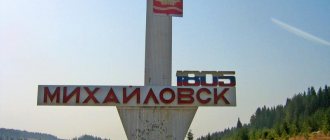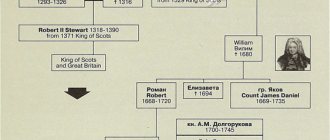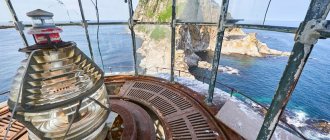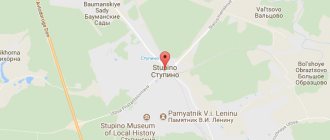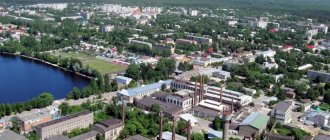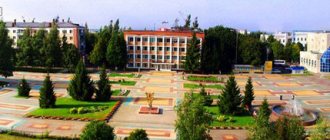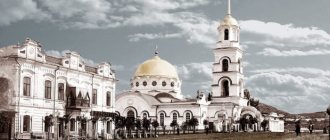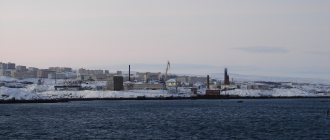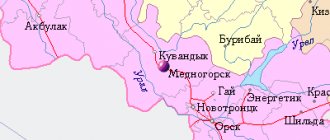200 kilometers from Orenburg , hidden by the spurs of the Guberlinsky Mountains , stands the city of Kuvandyk . The city itself is quite unremarkable, but the nearby nature is famous for its beauty throughout the Urals - it’s not for nothing that these places are nicknamed “ Orenburg Switzerland ”.
Photo by: Rustam Kadergulov
Story
The first peasants from Russian and Ukrainian settlements appeared in the Kuvandychka River at the end of the 19th century. They named the village founded here Pokrovka . In 1913, construction began on the Orenburg-Orsk -Troitsk , and in 1915 a railway station appeared in Pokrovka. According to tradition, they wanted to give the station the name of the village, but it turned out that the list of Pokrovok stations was more than enough. Then it was decided to name the station in honor of the river - Kuvandyk .
Photo by: Rustam Kadergulov
Over time, the name spread to the station village, and then to Pokrovka, which merged with it. By this time, Pokrovka had managed to grow, combining several settlements - the Tatar village of Mimbeteevo, the Bashkir village of Ishmuratovo and the Russian village of Kashkuk.
Photo by: Rustam Kadergulov
Kuvandyk became a city in 1953, largely thanks to the city-forming enterprises opened here - the South Ural Cryolite Plant and the Kuvandyk Mechanical Processes Plant. The growth of the city was boosted by the development of domestic aviation, which is impossible to imagine without aluminum, and aluminum without cryolite. There are only two enterprises that produce cryolite in Russia, one of them is Kuvandyksky.
Valley of Happiness
For its beautiful landscapes, Kuvandyk received the nickname “ Orenburg Switzerland ”, but this is not the only unofficial name of the city. Among the locals it is often called the “ Valley of Happiness ” - this is how, according to local residents, the toponym “Kuvandyk” is translated. This is even preceded by a legend.
Photo by: Rustam Kadergulov
Ramazan lived in a Bashkir settlement . He once went to the Guberlinsky Mountains in search of stones with which he could sharpen his scythes and knives. Ramazan left his horse on a lawn near a mountain river and went in search. He wandered through the ridges for a long time until he came across a whole scattering of stones he needed. He picked it up in a bag, put it on his shoulders and headed back to the river. He looks and the horse is gone! Ramazan was running, looking for his horse, and he didn’t notice how he ended up in a place completely unfamiliar to him. The forest-overgrown valley was cut through by a river as clear as a tear, along the banks there was a rich variety of soft and lush grass. He saw this beauty and his heart was relieved. And then a horse neighed nearby. Ramadan felt an unprecedented surge of joy and cried out, looking at the river - Kuvandychka! - “joyful.” Later, Ramadan brought people from his tribe here - they liked the place and decided to stay here. And the place was called the Valley of Happiness.
Cities
The city of Kuvandyk is a city in Russia, the administrative center of the Kuvandyk district of the Orenburg region. The population as of the end of 2011 is actually 28.1 thousand people, the area is 42.06 km?. The city is located on the Sakmara River, 194 km from Orenburg. For many years now, Kuvandyk has been the center of one of the largest districts in the region. Its dimensions are six thousand square meters. kilometers. There are 6 collective farms and 9 state farms in the region. More than half a million hectares of land are assigned to them. On October 24, 1983, the city of Kuvandyk was classified as a city of regional subordination. The head of the city is Viktor Dmitrievich Paukov. Kuvandy residents - Heroes of the Soviet Union: tankman, junior lieutenant Boris Grebennikov, whose name is one of the streets of Kuvandyk, pilots, squadron commanders Vasily Kozenkov and Nikolai Evsyukov, machine gun platoon commander Dmitry Slashchev, machine gun company commander Mikhail Gubin, artilleryman Nikolai Yezhov, participant in the assault on Berlin Lieutenant Colonel Pavel Davydov and Junior Lieutenant Ivan Nazarov. The city has 4 secondary and 1 eight-year schools, a district House of Culture and 3 clubs, a cinema "Kriolit", a music school, a House of Pioneers, 2 stadiums, a local history museum.
The surroundings of Kuvandyk are very picturesque, especially to the north of the city, along the banks of the river. Sakmara. There are rocky peaks with bizarre shapes (pointed, cone-shaped, steeply falling to the water, etc.). Here, on a wooded area between the river bank and the mountains, the buildings of the Sakmara holiday home are located. At the end of the 19th century, on the site of Kuvandyk, settlers from the European part of Russia and Ukraine founded the village of Pokrovka. When in 1915 a railway station appeared in the village, which, in order to avoid duplication of station names, was called “Kuvandyk”, named after the local river Kuvandychka. “Valley of Happiness” is what the residents of Kuvandyk call their city. They say that this is exactly what this name sounds like translated from Bashkir.
Education in the city of Kuvandyk
The city has a number of secondary specialized, general education and preschool institutions. There are no institutions of higher professional education in the city, so future students go to other cities to enroll.
Economy of the city of Kuvandyk
The main industrial enterprises of the city: South Ural Cryolite - production of forging and pressing and metalworking equipment, as well as products for construction, the construction industry, agriculture and housing and communal services. TVG Orenburg Down Talisman - production of Orenburg down scarves, Orenburg webs, knitted stoles YuUKZ and KZMP - the main enterprises of the city. But there are others - a grain collection point, a railway station, a down-knitting production, a creamery. The Pobeda state farm is located in Kuvandyk. Kuvandyk owes its rapid growth especially to the rapid development of domestic aviation. Its development is unthinkable without increasing aluminum production, and aluminum cannot be smelted without cryolite - a white powder that is obtained from fluorspar in special factories. There are two such enterprises in our country. One of them, the South Ural Cryolite Plant, is located in Kuvandyk. The high-quality cryolite it produces is used in many aluminum smelters in the country. And those who work in the shops and departments of this advanced enterprise legitimately believe that many aircraft in the country were built with their participation. Even in the pre-war years, prospectors chose a site for the construction of a cryolite plant a few kilometers from Kuvandyk. The construction of the first workshops began. But due to the war, construction was suspended and resumed only in 1946. On November 6, 1954, on the eve of the celebration of the 37th anniversary of the Great October Socialist Revolution, a man in working overalls, a senior dryer at the South Ural cryolite plant, stood up on the stage of the House of Culture, where the ceremonial meeting of the Kuvandyk City Council was taking place. This is how the South Ural cryolite began. Today, the plant’s staff, through modernization of equipment and the use of advanced technology, has more than doubled its design capacity. The reconstruction of the plant is in full swing, production areas are being expanded, and equipment is being updated. In 1976, when the reconstruction is completely completed, the enterprise's capacity will double again. And by 1954 it will triple! The products of the Kuvandyk plant are in great demand on the world market. It is bought in Yugoslavia, Poland and other countries. [edit] Kuvandyk Mechanical Press Plant At the beginning of the Great Patriotic War, the “Red Stamper” artel was evacuated from Kyiv to Kuvandyk. The equipment was placed in buildings left over from the timber rafting organization. Day and night, workers and specialists assembled machines and stamping presses. And just a few days after their arrival, the artel began to provide the products needed for the front. After the war, workers just as quickly switched to producing peaceful products. By that time, the artel had been transformed into a hardware and mechanical plant, and later into a mechanical press plant. Today, the main product of the plant is universal press shears for cutting metal of a wide variety of profiles. Kuvandyk provides up to one and a half thousand of these presses annually to the national economy of the country. It is not so easy to find a corner of the country where there would not be press shears with the KZMP brand. For example, the plant sent a large batch of equipment to world-famous auto giants in Tolyatti and Naberezhnye Chelny. The Kuvandyk brand is known far beyond the borders of the Union.
History of the city of Kuvandyk
At the end of the 19th century, peasants from Russian and Ukrainian provinces moved east, in search of the promised land, and walkers from distant lands came to the valley of the Ural river Kuvandychka. They liked the places near Sakmara. They bought land and began to settle along the shores of the lake. The village was named Pokrovka. In 1913 there were about three dozen houses here. The impetus for the development of the new settlement was given by the construction of the Orenburg-Orsk-Troitsk railway. In 1915, a railway station was built, which was supposed to be called Pokrovka after the village. But it turned out that there were already plenty of Pokrovok stations on the list. Then they remembered the local river Kuvandychka, and it was then that the word “Kuvandyk” first appeared on the station building. From then on, the station village, and then the village of Pokrovka, began to be called the same. Two years later, in 1917, the construction of the Kuvandyk locomotive depot was completed. The first freight and passenger train arrived at the station. The railway line was then extended to Sara station. True, regular train service did not begin here soon. At the end of 1917, power in Orenburg was seized by the Cossack ataman A. Dutov. In February 1918, a volost revolutionary committee was created in Kuvandyk. It was led by the Bolsheviks Nesterov and Sinyagin. At the call of the Revolutionary Committee, a Red Guard detachment of 67 people, mostly railway workers, was formed in the village. Nikolai Proskin was elected commander of the detachment. A little later, another detachment appeared. The Revolutionary Committee united them under the leadership of Alexei Dudarev. On June 22, 1918, White Cossacks led by Dutov attacked Kuvandyk from Ilyinka. 37 Red Guards and Dudarev died. They were buried in a mass grave in the southern part of the city, and later the remains were transferred to the center of Kuvandyk. In 1963, a monument to the fighters for Soviet power was unveiled. On July 1, 1918, at dawn, the Dutovites made a new raid on Kuvandyk. On July 3, the Red Guard detachment, together with the units that retreated from Orenburg, had to leave the city and retreat to Orsk. In February 1919, soldiers of the 215th regiment of the 24th Simbirsk Iron Division entered Kuvandyk. But in the spring, when Kolchak’s offensive began, he had to retreat again. On August 13, 1919, the offensive of the 1st Army began under the command of G.V. Zinoviev. On August 28, Kuvandyk was finally liberated from the Whites and became Soviet. On January 15, 1921, after the restoration and laying of new tracks, the Orskaya branch to the Krutorozhino station was officially put into operation and included in the Tashkent Railway. Due to repair, restoration and construction work on the railway, the population of Kuvandyk increased again. Such influxes of population occurred later - at the end of the thirties in connection with the creation of a timber rafting office in Kuvandyk, and then when new enterprises settled here. Part of the timber rafted along the Sakmara from Bashkiria to Orenburg was delayed in Kuvandyk, went to sawing and was sent from here to Orsk and to the villages of the eastern volosts. A timber rafting area is located on the banks of the Sakmara River. After the locomotive depot and station, it was the largest enterprise in the city. On August 24, 1953, the working village of Kuvandyk was transformed into a city (with a population of 23 thousand people). In December 2000, the city of Kuvandyk, united with the Kuvandyk district, was transformed into the municipal entity “Kuvandyk city and Kuvandyk district”.
| Coat of arms of the city of Kuvandyk - In an azure field under a silver peak, three times concave in the form of hills on top of a scale-like curved silver belt placed in the lower right corner - a golden horse walking and turning around. Approved by decision of the Council of Deputies dated December 24, 2003 #250. | Flag cities Kuvandyk — A rectangular blue panel with a width to length ratio of 2:3, reproducing the figures of the coat of arms - along the upper edge there is a white stripe of complex shape, forming the outlines of mountain peaks and on the main, blue part, an image of a yellow horse entering a white stream. Rationale for symbolism: The flag was designed based on the coat of arms of the Kuvandyk region. The composition of the flag is based on the legend of the “Valley of Happiness”. “In ancient times, in the Guberlinsky mountains, the Bashkir guy Ramazan was looking for stones with which he could sharpen scythes, knives and other tools of cattle breeders. On the bank of a mountain stream, he left his horse on a lawn with lush, silky grass, and he himself began to wander along the ridges. "Beylau!" (touchstone) - he exclaimed enthusiastically, having found a whole scattering of stones he needed. He picked it up in a bag, put it on his shoulders and went to the river. There was no horse. Ramazan searched for a horse for a long time and he wandered into a completely unfamiliar, but fertile place. The forested valley was cut through by a river with spring water as clear as a tear. Along the shore there is a rich variety of herbs. The herbs are soft, juicy, thick. Only the chirping of birds and the murmuring song of the river broke the silence. And somehow my soul seemed to feel better. And then the horse neighed. Out of a thousand horse voices, Ramazan would have recognized this voice. Joy overflowed, and then he said to the river - “Kuvandychka” - joyful. Ramadan brought people from his tribe to its shores. They agreed that this place was truly joyful and settled here.” Since then, residents have called their city “Valley of Happiness.” Blue color is a symbol of truth, honor and virtue, clear skies and expanses of water. Yellow color (gold) is a symbol of the highest value, wealth, greatness, constancy, strength, strength, generosity, intelligence and sunlight. White color (silver) is a symbol of simplicity, perfection, wisdom, nobility, peace and mutual cooperation. Author group: idea of the flag: Konstantin Mochenov (Khimki); rationale for symbolism: Galina Tunik (Moscow); artist: Robert Malanichev (Moscow); computer design: Oksana Afanasyeva (Moscow). Approved by the decision of the Council of Deputies of the Kuvandyk district municipality (#308/200-SD) dated April 30, 2008. |
Attractions
Unfortunately, there are no famous places in the city itself. But a walk through the streets is a must – the atmosphere is unusual. In addition, it is definitely worth visiting the Kuvandyk Museum of History and Local Lore . The museum first opened its doors on April 30, 1966. At the end of the 70s, the museum was allocated only two rooms in an old hotel on Mira Avenue. Today the Museum and Exhibition Center has an area of more than 400 square meters! This includes six exhibition halls, three exhibition halls for displaying the works of artists and folk artists, as well as a storage facility.
Photo by: Rustam Kadergulov
Kuvandyk is interesting to tourists for its surroundings. The city is surrounded by picturesque hills, which are actually the southern point of the Ural Mountains . Climbing one of the hills surrounding the city (for example, Tornatau ) , you can see the panorama of the city. From above it looks very picturesque. The city, surrounded on all sides by low mountains, is located as if in a huge bowl. in the Orenburg region comparable in beauty to Kuvandyk .
Photo by: Rustam Kadergulov
Mount Oslotau , which resembles a pyramid in outline, especially stands out Here and there rocks come to the surface. For example, the Turtle Rock, whose outline resembles this reptile. The Sakmara River , popular among water tourists, flows through the city In summer, the hills near Kuvandyk are a great place for hang gliding.
In winter, ski lovers from all over the Orenburg region come to Kuvandyk. The Kuvandyk 365 ski complex is located here . It is located five kilometers from the city in the valley of the Sakmara River. At the Kuvandyk 365 ski resort there is a hotel, a cafe, and a bar. Skis can be rented.
Kuvandyk
(Orenburg region)
OKATO code:
53414
Founded:
con.
19th century Urban-type settlement since:
1939
City since:
1953 City of regional subordination
Center:
Kuvandyk district
Telephone code (reference phone)
| 35361***** | 20-5-99 |
Deviation from Moscow time, hours:
2
Geographic latitude:
51°29′
Geographic longitude:
57°21′
Altitude above sea level, meters:
210 Sunrise and sunset times in the city of Kuvandyk
Economy
The main industrial enterprises of the city:
YUKZ and are the main enterprises of the city. But there are others, smaller ones - Kuvandyk bakery, station and other enterprises of the Kuvandyk railway junction, South Ural Mechanical Plant LLC, grain collection point, Prostor LLC, VOI rolling shop (felt felt boots, combing down and wool), TVG Orenburg Down Talisman (production of Orenburg down shawls, cobwebs, stoles). In Kuvandyk in the past there was a butter factory (in recent years it was called LLC “Moloko”, it ceased operations in the 2000s), a brick factory, and the central estate of the Pobeda state farm was located.
South Ural cryolite plant
Kuvandyk owes its rapid growth especially to the rapid development of domestic aviation. Its development is unthinkable without increasing aluminum production, and aluminum cannot be smelted without cryolite - a white powder that is obtained from fluorspar in special factories. There are two such enterprises in our country. One of them, the South Ural Cryolite Plant, is located in Kuvandyk. The high-quality cryolite it produces is used in many aluminum smelters in the country. And those who work in the workshops and departments of this enterprise rightfully believe that many aircraft in the country were built with their participation.
Even in the pre-war years, prospectors chose a site for the construction of a cryolite plant a few kilometers from Kuvandyk. The construction of the first workshops began. But due to the war, construction was suspended and resumed only in 1946.
On November 6, 1954, on the eve of the celebration of the 37th anniversary of the Great October Socialist Revolution, a man in working overalls, a senior dryer at the South Ural cryolite plant, stood up on the stage of the House of Culture, where the ceremonial meeting of the Kuvandyk City Council was taking place. This is how the South Ural cryolite began. Today, the plant’s staff, through modernization of equipment and the use of advanced technology, has more than doubled its design capacity. The products of the Kuvandyk plant are in demand on the world market. It was bought in Yugoslavia, Poland and other countries.
Kuvandyk plant of forging and pressing equipment "Dolina"
At the beginning of the Great Patriotic War, the Red Stamper artel was evacuated from Kyiv to Kuvandyk. The equipment was placed in buildings left over from the timber rafting organization. And just a few days after their arrival, the artel began to provide the products needed for the front. After the war, workers just as quickly switched to producing peaceful products. By that time, the artel had been transformed into a hardware and mechanical plant, later into the Kuvandyk Mechanical Press Plant (KZMP), and in the 1990s into the Dolina joint-stock company. Nowadays it is OJSC Kuvandyk Plant of Forging and Pressing Equipment Dolina.
The main product of the company is universal press shears for cutting metal of various profiles. Kuvandyk gave up to one and a half thousand of these presses annually to the national economy of the country. It is not so easy to find a corner of the country where there would not be press shears with the KZMP brand. For example, the plant sent a large batch of equipment to world-famous auto giants in Tolyatti and Naberezhnye Chelny.
Description
Kuvandyk is a city in the Orenburg region. Railway station of the South Ural Railway.
In 1915, on a site withdrawn from the land use of the community of the Bashkir village of Mambeteevo (founded in 1795 and now its territory is part of the city), the construction of the Kuvandyk station was completed, which became the basis of the present city of Kuvandyk. The station received its name from the name of the local river - Kuvandychka (in Bashkir Ҡыуадиҡ - “rejoiced”).
Geography
The city is located on the Sakmara River (mainly on the left bank), 194 km east of Orenburg.
Kuvandyk is the center of one of the largest districts in the region. The area of the district is 6 thousand square meters. kilometers. There are 17 agricultural enterprises and 2 elevators in the region (2015). More than half a million hectares of land are assigned to them.
On August 24, 1953, the working village of Kuvandyk was transformed into a city of regional subordination.
The surroundings of Kuvandyk are picturesque, especially to the north of the city, along the banks of the Sakmara River. On a wooded area between the left bank of the river and the mountains there are buildings of the inactive Sakmara Rest House.
Story
In 1795, on the picturesque bank of the small river Kuvandychka (from the Bashkir “kyuandyҡ” - rejoiced, rejoiced), the village of Mambeteevo was founded by the owners of patrimonial lands, the Bashkirs of the Usergan clan. According to the revision of 1876, there were 46 households in the village of Mambeteevo. Administratively, it was part of the Orsky district.
At the end of the 19th and beginning of the 20th centuries, peasants from Russian and Ukrainian provinces moved east in search of suitable land for life, and walkers from distant lands also came to the valley of the Ural river Kuvandychka. They liked the places near Sakmara. They bought land from the Bashkirs and began to settle along the shores of the lake. The village was named Pokrovka. In 1913 there were about three dozen houses here.
The impetus for the development of the new settlement was given by the construction of the Orenburg - Orsk - Troitsk railway. The first mention of Kuvandyk was discovered by local historian Sergei Strelnikov in a document from the Russian State Historical Archive - “Explanatory note to the project for the location of tracks and stations at the station. Kuvandyk,” which is dated March 14, 1914. In 1915, a railway station was built on patrimonial land seized from the community of the Bashkir village of Mambeteevo (now a village within the city). Based on the name of the local river “Kuvandychka”, the name “Kuvandyk” appeared on the station building. From then on, the station village began to be called the same.
Two years later, in 1917, the construction of the Kuvandyk locomotive depot was completed. The first freight and passenger train arrived at the station. The railway line was then extended to Sara station. True, regular train service did not begin here soon.
At the end of 1917, power in Orenburg was seized by the Cossack ataman A. Dutov.
In February 1918, a volost revolutionary committee was created in Kuvandyk. It was led by the Bolsheviks Nesterov and Sinyagin. At the call of the Revolutionary Committee, a Red Guard detachment of 67 people, mostly railway workers, was formed in the village. Nikolai Proskin was elected commander of the detachment. A little later, another detachment appeared. The Revolutionary Committee united them under the leadership of Alexei Dudarev.
On June 22, 1918, White Cossacks attacked Kuvandyk from Ilyinka. 37 Red Guards and A.M. Dudarev died. They were buried in a mass grave in the southern part of the city, and later the remains were transferred to the center of Kuvandyk. In 1963 on the street. Orenburgskaya a monument to the fighters for Soviet power was unveiled.
On July 1, 1918, at dawn, the Dutovites made a new raid on Kuvandyk. On July 3, the Red Guard detachment, together with the units that retreated from Orenburg, had to leave the city and retreat to Orsk.
In February 1919, soldiers of the 215th regiment of the 24th Simbirsk Iron Division entered Kuvandyk. But in the spring, when Kolchak’s offensive began, he had to retreat again.
On August 13, 1919, the offensive of the 1st Army began under the command of G.V. Zinoviev. On August 28, Kuvandyk was finally liberated from the whites and became Soviet (but not forever).
On January 15, 1921, after the restoration and laying of new tracks, the Orskaya branch to the Krutorozhino station was officially put into operation and included in the Tashkent Railway.
Due to repair, restoration and construction work on the railway, the population of Kuvandyk increased again. Such influxes of population occurred later - at the end of the thirties in connection with the creation of a timber rafting office in Kuvandyk, and then when new enterprises settled here.
Part of the timber rafted along the Sakmara from the Bashkir Autonomous Soviet Socialist Republic to Orenburg was delayed in Kuvandyk, went to sawing and was sent from here to Orsk and to the villages of the eastern volosts. A timber rafting area is located on the banks of the Sakmara River. After the locomotive depot and station, it was the largest enterprise in the city.
On August 24, 1953, the working village of Kuvandyk was transformed into a city (with a population of 23 thousand people).
In December 2000, a reorganization took place: the city of Kuvandyk became part of the municipal formation “city of Kuvandyk and Kuvandyk district”. As of 2014, the city of Kuvandyk had the status of a settlement (municipal entity) as part of a larger municipal entity - Kuvandyksky district of the Orenburg region.
The main holiday of Kuvandyk is officially considered the day of its transformation from a workers' village into a city of regional subordination (August 24, 1953, a corresponding decree was issued). This date is celebrated annually as City Day, which was established by a decision of the City Council in the 1980s. According to archival data, the settlement turned 100 years old in 2014: in the Russian State Historical Archive, local historian S. M. Strelnikov discovered documents from 1914 mentioning the Kuvandyk railway station, on the basis of which the city grew.
Sports and tourism
Since 1978, a ski resort began operating under the auspices of the South-UKZ; since 1990, the base was transformed into the Dolina ski complex, located 2 km from the city in the valley of the Sakmara River on its right bank. In 2001-2016, a branch of the Russian Ski School was located at its base. Since 2016, the ski complex has been transferred to regional ownership and received a new name - “Kuvandyk365”. In 2008, Kuvandyk became the venue for the Russian Alpine Skiing Championship among amateur alpine skiing teams. Hang gliding classes are also offered, and there are horseback riding and kayaking routes.
Source
Map
| Kuvandyk. Nearest cities. Distances in km. on the map (in brackets along roads) + direction. Using the hyperlink in the distance , you can get the route (information courtesy of the AutoTransInfo website) | |||
| 1 | Mednogorsk | 18 (15) | SE |
| 2 | Belyaevka | 65 (99) | Z |
| 3 | Novotroitsk | 73 (115) | SE |
| 4 | Akyar (Republic of Bashkortostan) | 73 (83) | NE |
| 5 | Saraktash | 76 (126) | NW |
| 6 | Guy | 76 (144) | IN |
| 7 | Orsk | 82 (115) | IN |
| 8 | Zilair (Republic of Bashkortostan) | 83 (142) | WITH |
| 9 | Isyangulovo (Republic of Bashkortostan) | 95 (113) | NW |
| 10 | Energetik | 102 (192) | IN |
| 11 | Novoorsk | 114 (160) | IN |
| 12 | Tulgan | 126 (155) | NW |
| 13 | Akbulak | 132 (313) | SW |
| 14 | Nezhinka | 139 () | Z |
| 15 | Baymak | 139 (188) | NE |
a brief description of
Located in the Southern Urals, on the river. Sakmara, 194 km east of Orenburg. Railway station.
Territory (sq. km): 5768
Historical sketch
Originated at the end of the 19th century. like the resettlement village of Pokrovka; the name was brought from the old place of residence.
Workers' village of Kuvandyk since 1939. City since 1953.
General information
Kuvandyk is the center of one of the largest districts in the region. The area of the district is 6 thousand square meters. kilometers. In the region there are 17 agricultural enterprises (OJSC, LLC, state enterprise), 3 elevators /2012/. More than half a million hectares of land are assigned to them.
On October 24, 1983, Kuvandyk was classified as a city of regional subordination.
The head of the city is Viktor Dmitrievich Paukov. Chairman of the Council of Deputies - Rinat Biktimirovich Alikbaev.
The city has 4 secondary schools, 1 nine-year school, 1 elementary school, a municipal center of culture and leisure, 2 Houses of Culture (“Cryolite” and “Zheleznodorozhnik”), a Children’s Art School, a House of Pioneers and Schoolchildren, a station for young naturalists, a Center for the Development of Creativity for Children and Youth , 2 stadiums (Mashinostroitel and Kriolite), a museum and exhibition center, several hotels and cafes, a developed network of trade enterprises.
The newspapers “Argus-inform”, “Evening Kuvandyk”, “Kuvandyk’s Compass”, “New Way”, and the magazine “Directory of Kuvandyk and Mednogorsk” are published. There is a television and radio station that produces radio and television programs about the city of Kuvandyk and the Kuvandyk region.
The surroundings of Kuvandyk are picturesque, especially to the north of the city, along the banks of the river. Sakmara. On a wooded area between the left bank of the river and the mountains there are buildings of the Sakmara holiday home.
